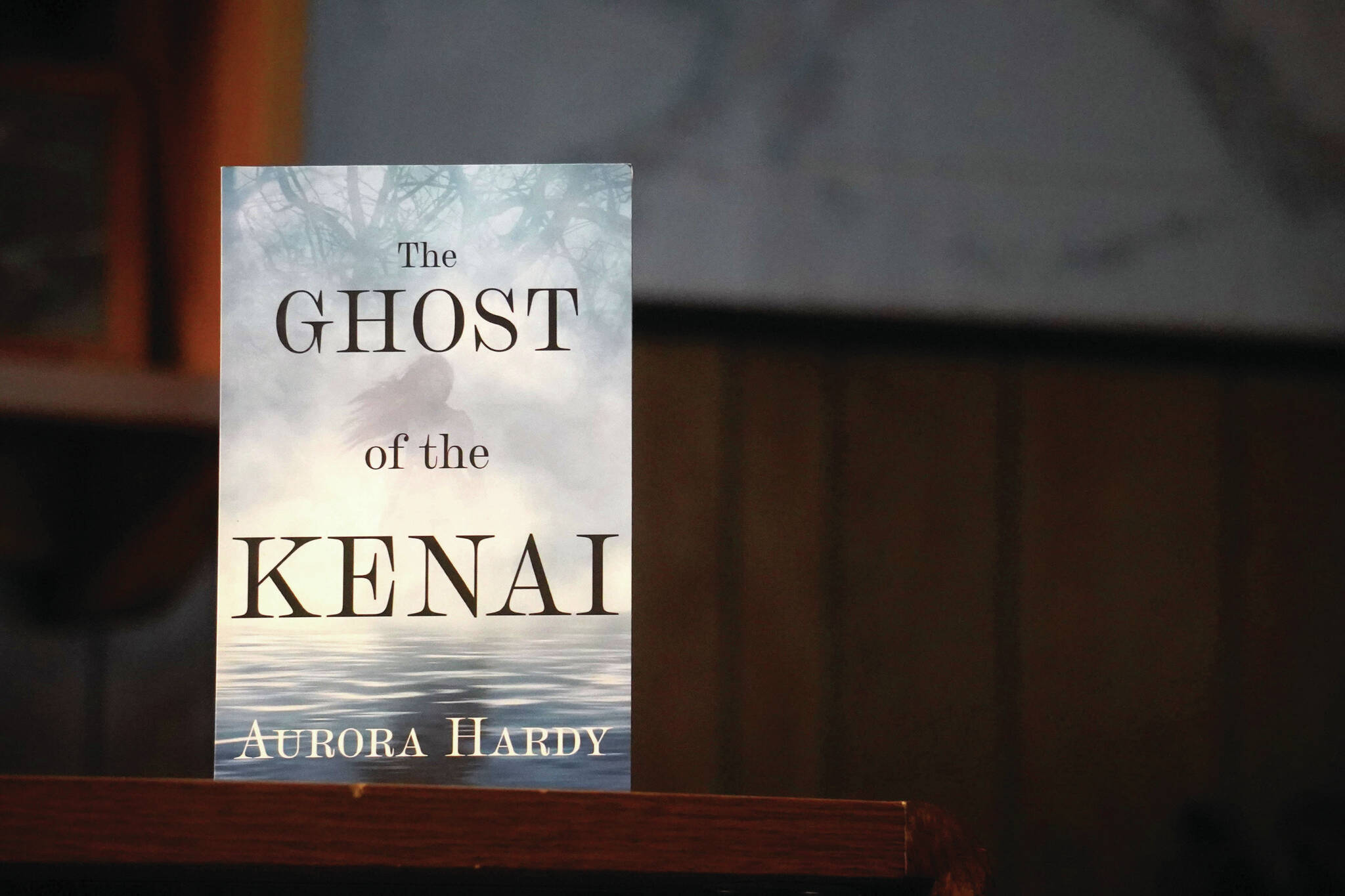At the mouth of the Kenai River in 1796, a Russian fort is tormented by the wails of a ghost — though she was once thought only “a fairy tale to scare children and warn men against mistreating women.”
That’s the premise of “The Ghost of the Kenai,” a historical fiction novel by Alaska author Aurora Hardy published this month. Hardy, per her bio in the back of the book, is an Alaska Native author from the Copper River area who wants to inspire young Alaskans to read. The book is a contemplative exploration of guilt and fear set in and around Redoubt St. Nicholas, a Russian fur trading post operated by the Shelikhov-Golikov Company that once overlooked the Kenai River and Cook Inlet where present day Kenai is now.
For much of the text, readers inhabit the thoughts and observations of Nicholas, a young Russian noble sent to the Kenai Peninsula with goals of his own. He arrives with Captain Zaikov to find the fort in disrepair, its men haunted by a spirit in tattered white clothes who wails out across the river from the south beach. She’s identified as Rusalka, a malicious entity borne of Russian folklore.
Of course, a Russian colony in 1700s Alaska is characterized in large part by its interaction with the Indigenous Dena’ina population — called the Kenaitze by the Russians. That relationship is portrayed as multifaceted. The men running the colony have much to feel guilty about, though the Russian Orthodox priests in the story are shown to be better neighbors.
Joining Nicholas in the spotlight is Qadanalchen, or Acts Quickly, the son of the Kenaitze chief who helps Nicholas to unravel the dour events that portended the arrival of Rusalka.
I didn’t realize until after I’d finished reading that, despite liberties taken, many of the characters in the text really did inhabit the peninsula more than 200 years ago. But that historical resonance seems less to be the point, a message from the author reads that the book is “a glance back and nothing more, visions of dreams and fantasy while walking the sandy shore.”
In “The Ghost of the Kenai” I found much to connect with in the depictions of the Kenai River and the Kenai Peninsula as an almost fantastical setting. Hardy describes trips up and down the Kenai bluffs, the turbidity of the inlet, a diet consisting of plentiful salmon and even clamming to the south in fun scene-setting that evokes the local area in a way I haven’t seen portrayed before. The Kenai Peninsula, introduced in the first chapter of the book through the eyes of Acts Quickly, is Yaghanen, the Good Land.
Often, Nicholas spends quiet moments alone gazing out across the inlet at the volcanoes rising into the sky. Mount Redoubt, Mount Illiamna, Mount Augustine and Mount Spurr all are just as present for him as they are to commuters on Bridge Access Road today.
Much time is spent contrasting the spiritual and storytelling values of the Russians and the Kenaitze. Acts Quickly wonders whether the Russians have accurately identified the drivers of their own stories and questions the meaning they take from them.
In storytelling and especially through the lens of the Rusalka is where much of the book’s musings on guilt and fear take root. When Nicholas arrives, the screams of the spirit have driven the fort’s leader, Konovalov, deep into his drinks — as the fort crumbles.
The fort is cursed, Konovalov claims. Each time Rusalka appears, bad things happen.
It’s his own reaction to the situation that he caused that serves as a searing indictment of his leadership and behavior. Rusalka, the Kenaitze say, wasn’t seen before the fort was constructed.
“Fear has big eyes,” one character says. “If you want to be scared, you will go around looking for something to be frightened of.”
The final chapters of “The Ghost of the Kenai” in part leaves the fort behind to unravel a story that reaches perhaps deeply into Russian politics, but it’s a thrilling page turner throughout as it uses the lenses of history and folklore to tell what a story that is, ultimately, human.
“The Ghost of the Kenai” was published by Epicenter Press on Jan. 14. The copy read for review was provided by the author.
Reach reporter Jake Dye at jacob.dye@peninsulaclarion.com.
Off the Shelf is a bimonthly literature column written by the staff of the Peninsula Clarion and Homer News.

